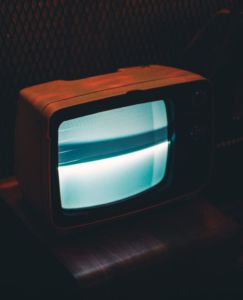A 4K TV? What’s That?
A 4K TV? What’s That?

4K TVs are much more common now, but that wasn’t the case even just a few years ago.
I remember back in 2014 looking at the related videos section and seeing the 4k tag for the first time.
In the bottom right was a resolution slider that lets you toggle the clarity, and besides the new 1440p being listed, there was also a 2160p setting.
Upon trying it, the only thing I noticed was a buffering without playing the video since it was an older computer lol.
I definitely wondered what it would look like, but it wasn’t until a few years later that I got to experience it when I bought my first 4K television.
So that’s what I want to talk about today since I know that by now, you’ve probably at least heard the term 4k or Ultra HD.
Plus I wanted to offer my thoughts on whether I feel 4K TVs are worth it in 2024.
To better understand what 4k is, we also need to understand how the pixels in your TV play a factor with this tech.
Understanding How The TV Pixel Affects Resolution
Why Was 4K Introduced For TVs?
4K Resolution Vs 1080p In TVs
The Future For Higher Resolution Displays
Understanding How The TV Pixel Affects Resolution

Your TV is made up of millions of little bits of information called a pixel.
When supplied with an electrical current, these pixels light up.
Depending on what’s on screen, these pixels have 3 sub pixels that are responsible for displaying one of 3 colors, red, green, or blue.
In combination with dimming and getting brighter at certain times, together they produce the picture quality that you see.
The incredible thing is with that combination of those 3 colors, they’re able to reproduce all of the possible colors you can see with your eyes.
That’s the basic understanding, although there’s variations on this that may add an additional sub pixel color like Quattron & OLED, or technologies like Micro LED & QLED that enhances how they’re displayed.
The number of these pixels present depends on what’s called the resolution.
The higher the resolution, the higher the count of pixels.
One of the most common resolutions today is full high definition or 1080p.
This is where there is 1920 pixels horizontally, and then 1080 pixels vertically, all displayed at once, hence the p at the end.
Believe it or not, the concept of high definition television isn’t new though.
In fact it was being researched decades ago, around the same time color TV itself was introduced!
So why didn’t they just introduce that in the first place?
Well 3 big reasons really; cost, lack of hardware to properly utilize it, and a lack of consumer viability.
It was way too much of a hassle at the time basically.
Long story short, cable companies started to more recently broadcast it commercially, then talks of commercial 4k picked up major steam not even a few short years later.
Why Was 4K Introduced For TVs?
As televisions and projectors increased in size, creators of media content and companies realized the needs for resolutions even higher than this.
They wanted a way to display millions more pixels on screen so that it wouldn’t look blurry on those larger displays.
The issue though was with the way that movies were already formatted, thus they were tasked with creating a work around and ended up calling this new digital video format at the time Ultra HD.
This is where a common mistake is made though since Ultra HD isn’t the full pixel count of 4K resolution if you wanted to be technical.
4k actually is a resolution used for cinemas & editing in digital photography, and comes in at 4096x2160p.
Ultra HD or UHD as it’s so commonly referred to, comes in at 3840x2160p; not a huge difference mind you, but the pixel difference is there.
However being so close in size with a nearly indiscernible difference, they’re pretty much used interchangeably.
It also uses a 16:9 aspect ratio which is now common in content and displays.
4K Resolution VS 1080p In TVs
But are any of these pixel increases in displays actually of any visual benefit?
Especially compared to the standard high definition sets many may still have?
Simply put, yes they are.
Let’s think of it this way; when comparing the two, traditional 4k has a pixel resolution that is 4 times that of HD.
Yes you heard that right, it has 4 times the amount of pixels comparatively.
That by definition, means 4 times the clarity of a 1080p television.
Now how noticeable this is in reality is going to vary from person to person.
It’s also dependent on the size of your TV, since under a certain size (under 46 inches) chances are you won’t benefit from that extra detail too much.
The bigger the screen basically, the greater the need for a higher resolution.
A modern 4K TV doesn’t simply involve a bump in resolution either since there’s other formats that improve the experience as well like high dynamic range (HDR), expanded color, and higher refresh rates.
Personally I’m not one to buy into the hype of things at all, but having a few 4k TVs right now, I can tell you the difference is incredible.
It’s something that you would have to see for yourself to see why it’s so exciting.
Watching a 4k Blu-ray on it is incredibly clear.
So here’s the real question, as of today is a 4k TV worth it?
If you had asked me that same question back in 2014, as cool as it is, I would have said to probably wait a bit for the content to catch up to the standard.
But right now as of 2024? I definitely think so & here’s why.
The Future For Higher Resolution Displays
For a good period of time while UHD was in the implementation phase, there was a real problem, no content!
They had this novel idea, with the promises of a major bump in visual clarity, but there was barely anything to actually take advantage of it.
Then as Netflix, and other media juggernauts and streaming services began to embrace it, the idea of 4k becoming the next big standard gained clout.
Today in 2024, there’s much more content and ways to actually utilize the format.
There’s UHD Blu-ray players, 4k gaming consoles, and even phones now with the ability to capture in 4k.
It definitely seems like a lot of third parties are on board now.
Even some cable companies have started to offer 4k services through ATSC 3.0, though full availability will likely take some time still.
Reason being, besides the financial aspect, being be able to provide a resolution like that takes a lot of power and infrastructure to implement.

However do know that at this point in time, while watching cable TV in this new resolution isn’t as widespread just yet, that time is likely coming.
Couple this along with the fact newer 4k TV’s can stream a lot of your favorite shows in 4k and it starts to make sense.
This wasn’t the case even just last year, however new content is being rolled out what seems like daily.
1080p TV’s are in the process of being phased out, and are much harder to find nowadays, since Ultra HD will eventually be the new standard moving forward.
Something else you may have been wondering is if it’ll still play 1080p and lower resolution content and luckily it will.
They’re backwards compatible, meaning any lower resolutions automatically get upscaled to display on screen so they’ll still play it.
I also recently did an article on some of the best TV’s in my opinion if you’re curious. https://easyhometheater.net/the-best-tvs
What will really be interesting though is seeing how more advanced resolution technologies are implemented since 8K resolution & IMAX Enhanced exists now as well.
I think the future is bright for the implementation of higher resolution displays, and the more display technologies that focus on really enhancing our content in appreciable ways, the better in my opinion.
What’s really exciting though is that higher resolution displays are just one of the many interesting smart home technologies I feel like we’ll see in the upcoming years.

Hey everyone it’s nice to meet you. I’m Jay, writer & founder of the site Easy Home Theater. I’ve been with the hobby of home entertainment for many years now. I decided to create this site to be a helpful resource, and share everything that I’ve learned from personal experience with you. I also happen to be a huge gamer, lover of all things tech related, and a major fitness buff (love weightlifting)
https://Facebook.com/easyhometheater
https://Twitter.com/easyhometheater
https://www.Pinterest.com/easyhometheater/
https://www.instagram.com/easyhometheater/
10 Comments so far:
-
-
Yeah, it’s crazy because I remember when they were definitely up there in terms of price but now they’re so much more manageable. Not only that but 1080p is actually in the process of being phased out believe it or not.
-
-
I am a TV fan and it seems technology is only evolving better to my advantage. The Internet is really an awesome tool if you know how to go about it. How would I ever know about all these details without great posts like this one?
I love the beauty of this post and the information was really helpful. Thank you very much.
-
Well yeah if anything with each passing week, it literally seems like technology has progressed. The fact that there’s now something 4 times clearer still boggles my mind even now lol. It looks so good in person.
-
-
Hi Jay,
I really love your website and I saved it to my favorites. Now that 4K HDTV’s have gone down in price. I’m definitely going to get one. I bet football games look amazing in 4K. I really learned a lot about 4K reading your article. I can’t wait to upgrade my TV. Thanks for all the great info William!
All the best,
Jack
-
No problem man. Glad I could help you out. I know it can be a confusing topic sometimes but hey, that’s why I’m here; to make it easy!
-
-
Great article Jay, I had no idea but you have explained this so well. I will share with my friends that are much more TV users than myself but good to know for when I consider an upgrade. Thanks for sharing.
-
No problem, again I’m happy to help at least someone lol
-
-
Hey man, what an awesome site. I’ve learnt so much about 4K TVs and I’m seriously considering getting one thanks to your info.
Now there coming down in price I can actually afford one and without posts like this I wouldn’t know where to start so thanks a lot-
Yeah it’s definitely an awesome time for people like us because while manufactures compete for the latest and greatest thing, guess who wins? We do! So yeah it’s definitely a good thing. But yeah no problem dude. 🙂
-







I was doing a little shopping online and I see the prices for 4k Tv’s have gone done a lot from when I first saw them. It’s definitely something I’m going to keep in the back of my head when it’s time to purchase a new TV